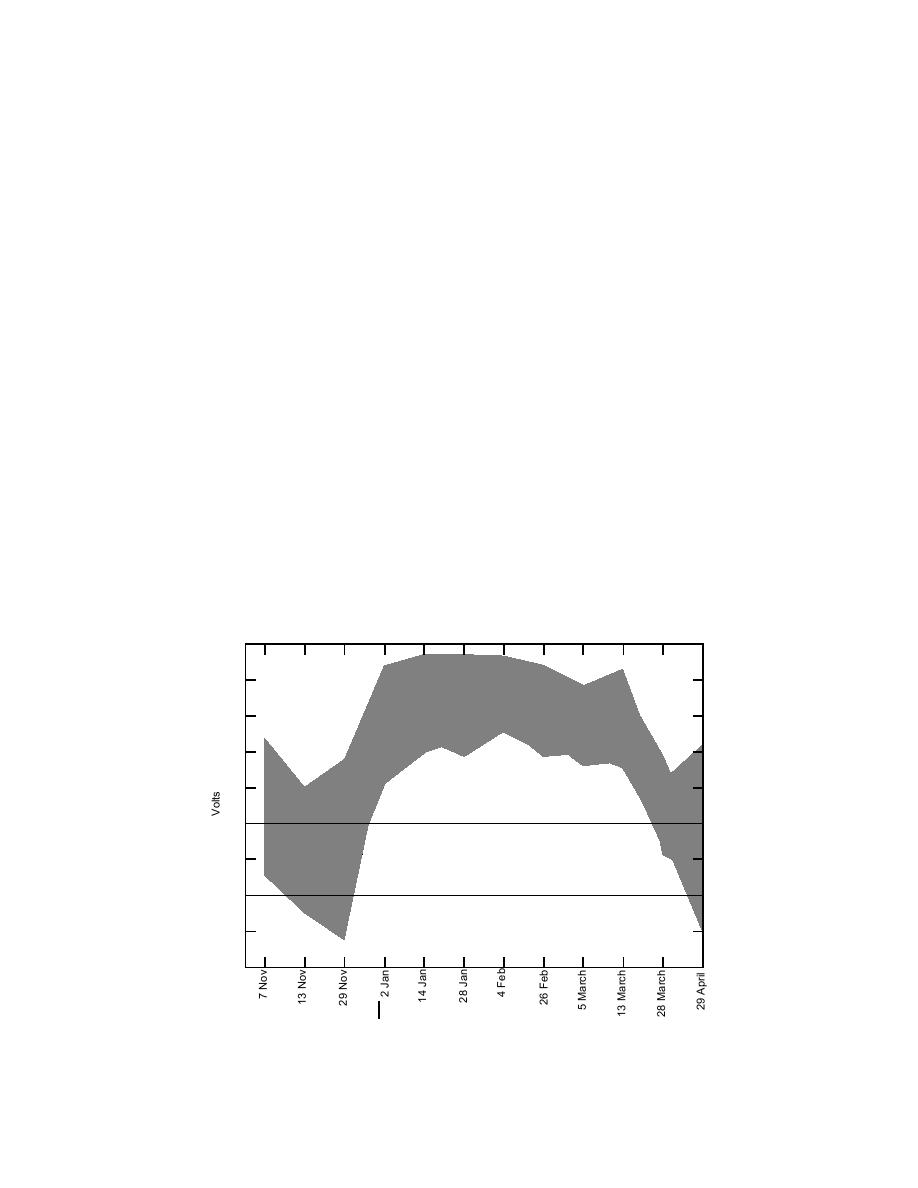
APPENDIX A: RESPONSE OF BURIED
ELECTROMAGNETIC SENSOR SYSTEM DURING WINTER
SOROIDS Case Study
A radio-frequency (41 MHz) electromagnetic
soil surrounding the transmitter cable. The pro-
sensor system consisting of a processor and two
cessor analyzes the received signal for variations
buried coaxial cables is in operation at SOROIDS.
that would be caused by a person crossing the
The sensor system is designed to generate an
cables, and generates a voltage in response. If
alarm when a person crosses the buried cables.
the voltage is negative, the sensor system does
The cables are placed 1.5 m apart at a depth of
not generate an alarm and the person crossing
22.5 cm in the local soil, a sandy loam. The elec-
the cables proceeds undetected. A voltage of 0.4
trical conductivity of the soil at 40 MHz ranges
V is regarded as the minimum response for reli-
from 2 to 41 mmhos/m for moisture contents of
able detection of a person because that voltage
3 to 37% by volume (Malone, pers. com.). Be-
corresponds to a margin of 8 dB above the alarm
cause this soil has a low electrical conductivity,
threshold.
only the excavated soil--no sand--was used as
One factor determining the magnitude of the
backfill around the cables.
processor voltage is the strength of the electro-
Both coaxial cables are manufactured with
magnetic field in the zone defined by the cables.
gaps in their shields. One cable, the transmitter,
If the electromagnetic field generated by the
leaks the pulsed signal sent down it by the pro-
transmitter cable is weak, as it would be in soil
cessor into the surrounding soil. The other cable,
of high electrical conductivity, the disturbance
the receiver, conducts a signal induced by
to it caused by a person crossing the cables may
changes to the electromagnetic field set up in the
be insufficient to produce a processor voltage
1.2
0.8
Reliable Detection
0.4
Marginal Detection
0
Non-detection
0.4
1990
1991
Figure A1. Maximum responses (voltages) of buried electromagnetic sensor sys-
tem to a person crossing the sensor cables at various locations on the dates shown
fall within the shaded band.
21



 Previous Page
Previous Page
